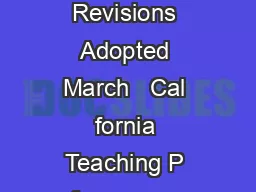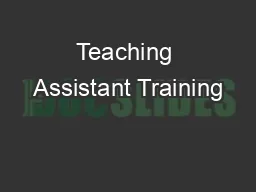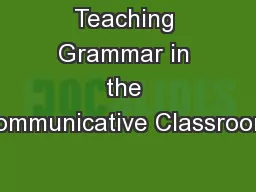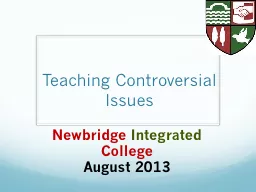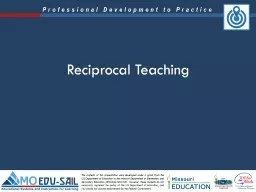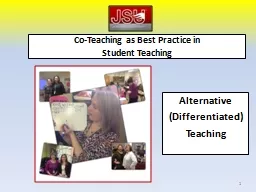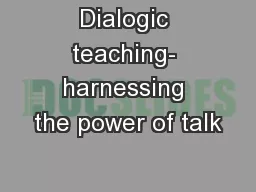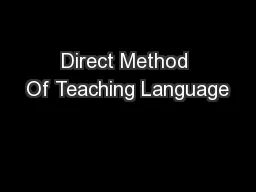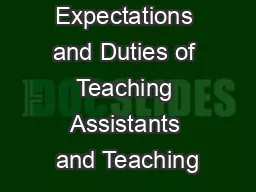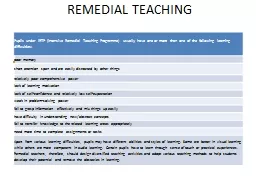PPT-The Teaching of
Author : debby-jeon | Published Date : 2015-12-04
RI 88 By Joseph Schmith Reading for Information 88 Delineate and evaluate the argument and specific claims in a text assessing whether the reasoning is sound
Presentation Embed Code
Download Presentation
Download Presentation The PPT/PDF document "The Teaching of" is the property of its rightful owner. Permission is granted to download and print the materials on this website for personal, non-commercial use only, and to display it on your personal computer provided you do not modify the materials and that you retain all copyright notices contained in the materials. By downloading content from our website, you accept the terms of this agreement.
The Teaching of: Transcript
RI 88 By Joseph Schmith Reading for Information 88 Delineate and evaluate the argument and specific claims in a text assessing whether the reasoning is sound and the evidence is relevant and sufficient . 10 No 2 ithout denying the significance of traditional lectures and instructorled discussions in undergraduate educa tion an increasing number of teachers are recognizing the value of also assigning collaborative work to their students Small group wo Making Subject Matter Comprehensible to Students TPE 1 Specific Pedagogical skills for Subject Matter Instruction TPE 1A Subject Specific Pedagogical Skills for Multiple Subject Teaching Assignments Teaching English Language Arts in a Multiple Subje Rensselaer Polytechnic Institute. Teaching, Learning, Diversity, and Student Development . Major Concepts. Relevance to Teaching Assistantship. A Definition of Teaching. Teaching in an academic setting - defined as the act of facilitating the student's rational processes, environmental and interpersonal interactions, behavioral awareness, and problem-solving, decision making, and evaluation skills.‘ . Tips and Practical Activities. ATER Conference 2015. Hannah Murphy. English Language Fellow. Mekelle. , Ethiopia. Opening Discussion. How is grammar taught at your school/program? As a part of other courses? Stand-alone grammar course?. Newbridge. . Integrated. College. August 2013. Aims of Session 9.30-11.00am. Raise your awareness of context and scope of addressing the teaching of controversial issues.. Constraints and limitations. nastoc. ). Dr. Karen Kerr. WHY LEARN OUTDOORS?. Children enjoy and remember outdoor work (Dillon et al, 2006). Learning experiences conducted in the outdoors were more likely to have a cognitive impact than those conducted in classrooms (Eaton, 2000). Reciprocal Teaching. Overview . and Purpose of EP. Effective . Teaching/ Learning . Practices (EP). Spaced versus Massed . Feedback. Assessment Capable . Learners. Reciprocal . Teaching. How am I currently teaching my students to predict, learn words, question, and summarize to become independent thinkers and readers?. Student Teaching. Alternative. (Differentiated). Teaching. 1. One Teach, One Assist. How would this strategy work well in an inclusion or second language classroom?. LOOK FOR. :. The variation in the presentation of the same material. Derval Carey-Jenkins- May 2014. . DC-J. Dialogic Teaching May 2014. What . is dialogic . teaching?. Take . a few moments to jot some key words . /themes/concepts relating . to what you understand dialogic teaching to be – talk with your colleagues on your . By: Ms . Mandeep. . Kaur. . . Asstt. . Prof. , Babe . ke. College Of Education . Daudhar. . Moga. .. The . Direct . method for teaching . English . was introduced in Indian in the early 20. th. J. Steven Brown. Vice Provost and Dean of Graduate Studies. Two Types of Teaching Appointments. Teaching Assistant (TA). A full-time graduate student who assists an instructor in the teaching of a course.. Programme. ) usually have one or more than one of the following learning difficulties:. . poor memory. . short attention span and are easily distracted by other things. . relatively poor comprehensive power. La gamme de thé MORPHEE vise toute générations recherchant le sommeil paisible tant désiré et non procuré par tout types de médicaments. Essentiellement composé de feuille de morphine, ce thé vous assurera d’un rétablissement digne d’un voyage sur . IAP UG Teaching slides 2015-16AUTISMAllen IAP UG Teaching slides 2015-16AUTISMchildpsychiatrist,describeddemonstratedengagement,communicate,postulationautism 3 IAP UG Teaching slides 2015-164NEURODEVE
Download Document
Here is the link to download the presentation.
"The Teaching of"The content belongs to its owner. You may download and print it for personal use, without modification, and keep all copyright notices. By downloading, you agree to these terms.
Related Documents


